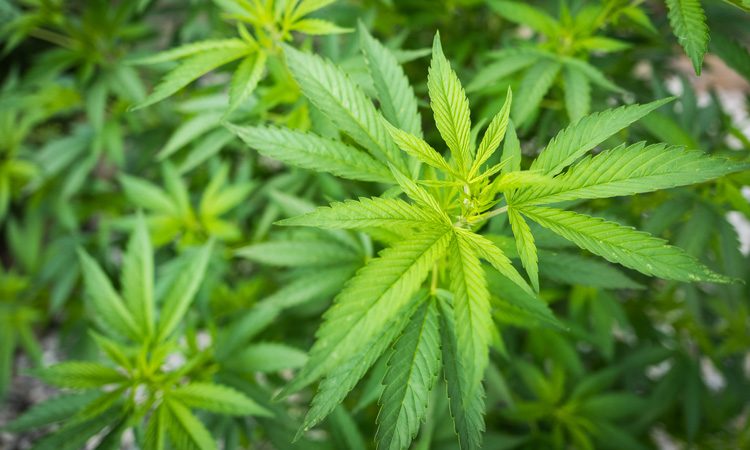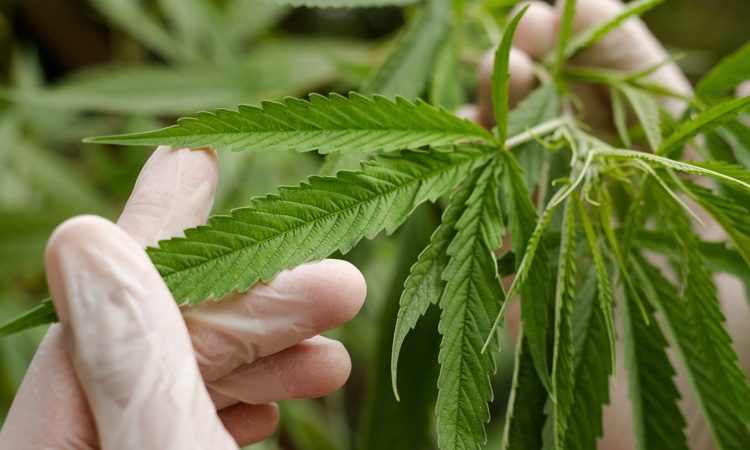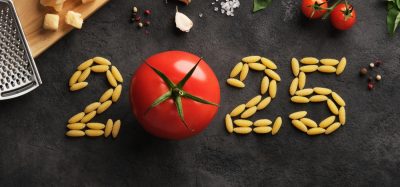Taking the guess work out of analysing cannabis edibles
- Like
- Digg
- Del
- Tumblr
- VKontakte
- Buffer
- Love This
- Odnoklassniki
- Meneame
- Blogger
- Amazon
- Yahoo Mail
- Gmail
- AOL
- Newsvine
- HackerNews
- Evernote
- MySpace
- Mail.ru
- Viadeo
- Line
- Comments
- Yummly
- SMS
- Viber
- Telegram
- Subscribe
- Skype
- Facebook Messenger
- Kakao
- LiveJournal
- Yammer
- Edgar
- Fintel
- Mix
- Instapaper
- Copy Link
Posted: 23 October 2019 | Dr Kaveh Kahen, Dr Toby Astill | No comments yet
Cannabis, hemp and CBD experts, Dr Kaveh Kahen and Dr Toby Astill, discuss the analysis process for cannabis edibles, outlining the challenges and solutions available.


In 2017, the Specialty Food Association predicted that cannabis would be a leading trend in the food and beverage industry from 2018 onwards. Since then, several global food and beverage manufacturers have shown a strong interest in this space, having explored the addition of legalised cannabis to their product portfolios.
Just as with other food products, it is crucial to test cannabis edibles for potential contaminants such as pesticides, heavy metals and residual solvents. In addition, determining the potency of edible products is particularly pertinent due to the complexity of the matrices involved.
Given these needs and challenges, it is vital that labs have access to innovative instruments and software that are robust and sensitive, yet simple to use. Scientists and technicians must also have pre-established sample preparation methods, training and support. This type of analysis infrastructure will help labs keep pace with the rapidly growing cannabis testing market and, in turn, help food companies and others in the food supply chain ensure that consumers get what is promised in terms of product quality and potency.
The challenges with sample preparation
There is currently a variety of edible products available on the US market, with some of the most popular being chocolates, brownies, cookies and gummies. Due to this wide range of samples, a robust sample preparation method is crucial when testing edibles to ensure accurate and reliable analysis results across all available products.
The very nature of producing edibles – such as mixing cannabis with flour, sugar, chocolate and other ingredients – makes these products non-homogenous prior to testing. This means that a sample taken from one part of a brownie or cookie may have completely different concentrations of cannabinoids – as well as contaminants – compared to one taken from a different area. This inconsistency has a significant impact on the accuracy of results across a given sample and necessitates the homogenisation of samples prior to analysis.


Due to the variety of cannabis edibles available in the US market, it is critical to implement a robust sample method to ensure accurate and reliable analysis results across all products.
The first step is to process the sample into a form that can be ground into small particles. This creates a homogenous powder from the product that is fully representative of the total sample received. In the case of heavy metal analysis, this would typically be followed by microwave digestion to break down the complex cannabis matrix and extract the metals for quantification and identification. This method works effectively across a variety of sample types, including edibles, as microwave digestion ensures complete dissolution of the samples in preparation for analysis on an ICP-MS (inductively-coupled plasma mass spectrometry).
The importance of a good extraction phase
It is vital to employ an effective extraction phase during sample preparation in order to reduce any interferences that might result from the complexity of the matrix. The presence of sugars, fatty acids and other ingredients in the sample will have various effects depending on the type of analysis being performed. For example, when analysing a sample for pesticides, these additional components could suppress the target ion signal; but if you are analysing a sample for cannabinoids, these could instead cause interferences.
In addition, the efficiency of the extraction process can also have a significant effect on the accuracy of obtained results. Numerous reports suggest that the concentration of cannabinoids reported in products varies greatly between different labs, with as much as 40 percent variation being observed from one batch to another. This is widely believed to be caused by the inefficiency of different extraction methods, meaning inaccuracy is introduced in that initial step of sample preparation.
It is therefore essential that labs have several sample preparation tools at their disposal and develop specific standard operating procedures (SOPs) for each type of sample. It is also paramount that labs perform their own validation studies when dealing with new samples, using robust instruments that can account for any interferences. Taking residual solvent analysis as an example, a headspace GC/MS (gas chromatography-mass spectrometry) approach requires minimal sample preparation, enabling easy maintenance and a faster analysis time. It also allows non-target compounds to be identified, which prevents false positives from interfering with the results of analysis.
Keeping it clean in edibles analysis
In terms of sample clean up, the complexity of matrices in cannabis edibles can once again cause issues. This is due to deposits and residues building up at the interface of the ionisation space in mass spectrometry instruments, ultimately requiring further cleaning and maintenance steps. However, some instruments have additional technology to reduce the frequency of cleaning the interface, which addresses matrix-induced maintenance issues and improves throughput. For example, a heated inner surface on the MS can prevent contaminants from depositing, while a hot laminar flow can desolvate any charged species. This ensures long-term stability and reproducibility, and reduces the frequency of cleaning, which can cause throughput delays in some labs.
The issues around potency analysis of edibles
Accurately establishing the potency of an edible is another key consideration during analysis, to help inform consumers about what they are buying. Numerous factors can influence the potency of an edible and the effects it can have on a particular person. However, the majority of focus when determining potency has either been on the THC (tetrahydrocannabinol) or CBD (cannabidiol) level of a product. This narrow view can present an issue for cannabis edibles due to their route of administration. When cannabis is smoked, the native acidic forms are decarboxylated to produce the psychoactive THC and CBD. However, if cannabis is ingested, as with edibles, these acidic forms will not be converted to their psychoactive counterparts. Consumers will therefore not receive the expected effect if only the total amount of THC – which includes THC and THCA – are reported. It is therefore important that methods are available for the full cannabinoid quantification of edible cannabis products, in order to accurately determine potency.
Because the acidic forms of THC and CBD will be decarboxylated when heated in the injector port of a GC/MS, HPLC (high performance liquid chromatography) is often the preferred method for determining potency in edible materials and extracted tinctures. HPLC offers a method for the chromatographic separation and quantitative monitoring of these native acid forms, providing exceptional repeatability and affording limits of quantification (LOQs) well below the current concentration levels of interest for cannabinoids in edibles. This method ensures that labs can more accurately determine the potency of edible cannabis products.


Ironing out the issues in a rapidly growing market
The accelerating interest in the edibles market across parts of the US and the rest of the world has led to a rapid increase in the number of cannabis testing laboratories. Often, many of these labs are in ‘start-up’ mode and may not have the required scientific expertise or training regimens onboarded to perform rigorous testing of cannabis and edible products. Vetted best practices and methods, that are available from the moment a lab is set up, are therefore vital for this fast-paced market and can give labs confidence in their results.
For example, single-instrument techniques that incorporate two ionisation sources are available to help labs test for all the pesticides and mycotoxins currently regulated in North America in a single run. Having an established method for pesticide analysis also streamlines the entire analytical process, improving cost-effectiveness and eliminating the need for more time-consuming preparation methods.
The sensitivity of instruments is another crucial consideration for labs across the world, as regulatory limits for contaminants continue to evolve and become more stringent. Future-proof instrumentation and robust methods play an important role in ensuring the continued safety of consumers within the growing cannabis industry.
One pertinent issue facing the growing cannabis edibles market is the current lack of industry standards and quality control, such as the persistent pattern of labelling inaccuracies. Cannabis edibles are not subject to federal quality control regulations, which results in variation in the quality and consistency of these products. More needs to be done to ensure that the manufacturing and labelling of edibles is as consistent as other legalised drugs, such as alcohol and tobacco.
Finding the right solution
There are several areas that have significant opportunity for further development in the expanding cannabis edibles market. Improvements can be made by outfitting labs with complete solutions, including instruments and software that add value from sample intake to results delivery. The entire process also needs to be streamlined with methodologies that have already been developed and validated. It is particularly pertinent for cannabis edibles to ensure that established cannabinoid extraction methodologies exist for different matrices. Further to this, it is also imperative that ever-more sensitive equipment is available to ensure labs are able to meet future regulations around contaminants and potency.
By leveraging technologies, labs can keep up with the growing cannabis edibles market and continue to help provide safe medicinal and recreational products to consumers across the globe.
About the authors


Dr Kaveh Kahen
Dr Kaveh Kahen is the President and CEO at Sigma Analytical Services, and founded the company after recognising a significant gap in cannabis and hemp science and testing methodologies. He has a wealth of experience in the design, development and applications of analytical instrumentation and testing methodologies, and has previously held a number of leadership positions at PerkinElmer.


Dr Toby Astill
Dr Toby Astill is the Global Market Manager for Cannabis and Hemp Markets at PerkinElmer. He first joined PerkinElmer in 2011 as an Account Manager and has since gained significant experience across the global cannabis market.
Issue
Related topics
CBD hemp & cannabis, Food Safety, Health & Nutrition, New product development (NPD), Quality analysis & quality control (QA/QC), Regulation & Legislation, Research & development, The consumer
Related organisations
PerkinElmer Inc, Sigma Analytical Services, The Specialty Food Association









